Audio Software & Plugins
-
CEDAR VoicEX 2 Audio Plugin
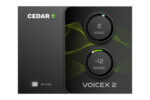
CEDAR VoicEX 2 Audio Plugin sets a new standard for real-time noise reduction and the elimination of unwanted reverb. Based upon CEDAR’s latest advances in marrying cutting-edge DSP and AI-based audio processing, CEDAR VoicEX 2 Audio Plugin sets a new standard for real-time noise reduction and the elimination of unwanted reverb. Requiring much lower processing [more]
-
CEDAR Adaptive Limiter 2 Audio Plugin
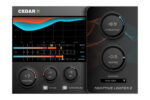
CEDAR Adaptive Limiter 2 Audio Plugin employs a unique algorithm for transparent, precise, musical limiting to retain integrity of the audio. Unlike a conventional single-band or multi-band limiter, our Emmy® Award winning CEDAR Adaptive Limiter 2 Audio Plugin employs a unique algorithm called CEDAR Spectral Limiting. This calculates a continuously varying EQ profile that accurately [more]
-
CEDAR Retouch Audio Plugin
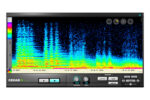
CEDAR Retouch Audio Plugin is the spectral editor of choice to identify, isolate and manipulate individual sounds within an audio file. Nowadays, we take spectral editing for granted, but it’s a relatively recent invention, first seen in 2002 when CEDAR patented the underlying technology and announced the first version of Retouch. It’s not an exaggeration [more]
-
CEDAR Manual Declick Audio Plugin
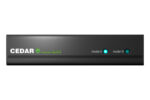
CEDAR Manual Declick Audio Plugin is ideal for restoring the extended scratches and clicks encountered on many types of audio media – film, tape or disk, whether analogue or digital. CEDAR Manual Declick Audio Plugin has unique dual algorithms – optimized for long clicks and scratches – that will remove noises such as those found [more]
-
CEDAR Dethump Audio Plugin
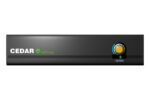
CEDAR Dethump Audio Pluginp eliminates the extended low-frequency thumps that cannot be restored using conventional declicking processes and filters. CEDAR Dethump Audio Plugin replaces the unwanted sound with restored low frequency audio and is the ideal tool for removing many of the previously intractable problems associated with optical soundtracks, cylinders, 78rpm discs, and even modern [more]
-
CEDAR Debuzz Audio Plugin
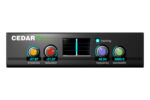
CEDAR Debuzz Audio Plugin quickly and easily removes all manner of buzzes and hums with fundamentals as high as 500Hz, and it can eliminate unwanted signal components across the entire audio spectrum. CEDAR Debuzz Audio Plugin will track wandering tones and, unlike traditional filters, can successfully restore the audio without unwanted side-effects such as limited [more]
-
CEDAR Auto Dehiss Audio Plugin
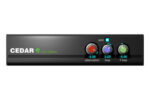
CEDAR Auto Dehiss Audio Plugin embodies an advanced algorithm that is far less susceptible to the unwanted side-effects sometimes called twittering, glugging, the ‘underwater sound’, and even ‘space monkeys’. In short, CEDAR Auto Dehiss Audio Plugin is able to determine the broadband noise content and remove it without the introduction of these unwanted artifacts. A [more]
-
CEDAR ScreenVox Audio Plugin

CEDAR ScreenVox Audio Plugin provides astounding near-zero latency noise suppression designed specifically for the spoken word. CEDAR invented the digital dialogue noise suppressor. This transformed noise reduction in film & TV production, post, newscasting and sports reporting. Amongst other accolades, it won an Academy Award® for services to the movie industry. Today, there’s ScreenVox, a [more]
-
CEDAR StageVox Audio Plugin
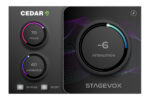
CEDAR StageVox Audio Plugin is a near-zero latency noise reduction plug-in designed specifically for singers. CEDAR has developed StageVox, which does for singing what our dialogue noise suppressors do for speech. StageVox is based on our Quantum™ technology, which is essential if you want to eliminate noise when working with live sound and tracking. It’s [more]
-
CEDAR DNS One Audio Plugin
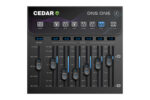
CEDAR DNS One Audio Plugin is a renowned dialogue clean-up plugin that offers users the ability to process the whole audio spectrum or focus on specific problems. When CEDAR received an Academy Award® for transforming dialogue noise suppression in film post-production, the Academy Of Motion Picture Arts And Sciences stated that it could “be found [more]
-
CEDAR Decrackle Audio Plugin
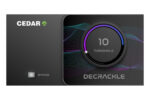
CEDAR Decrackle Audio Plugin provides effortless crackle removal, seamlessly producing a clean, un-compromised output. CEDAR invented the Split and Recombine Decrackle algorithm that many have tried to copy but none have equalled. This unique technology splits the audio into two signals, one containing primarily crackle and the other containing only wanted audio. The crackle can [more]
-
CEDAR Declip 2 Audio Plugin
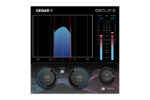
CEDAR Declip 2 Audio Plugin eliminates clipping distortion with ease and reconstructs the signal as if the clipping had not occurred. Clipping occurs when a piece of equipment or a medium carrying a signal is unable to handle a high level presented at its input, and will usually be heard as a harsh distortion that [more]
-
CEDAR Declick Audio Plugin
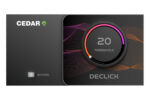
CEDAR Declick Audio Plugin our Emmy Award winning declick technology to make it impossible to tell that your audio was ever damaged in the first place. When real-time digital audio processing was thought by many to be impossible, CEDAR invented the digital declicker. Trusted by major record companies, mastering studios and sound archives, this helped [more]
-
CEDAR Forensic Enhance Audio Plugin
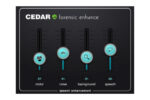
CEDAR Forensic Enhance Audio Plugin is an easy, effective toolkit to suppress noise and enhance speech for listenability and intelligibility. It’s incredibly simple to use but nonetheless an effective audio forensic toolkit comprising four related processes that suppress noise and enhance speech to increase listenability and intelligibility. We live in a world where an increasing [more]
-
CEDAR Declickle 3 Software Module for Cambridge
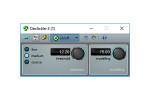
CEDAR Declickle 3 replaces and greatly improves upon the Declickle algorithm supplied on systems up to CEDAR Cambridge v11. It offers improved detection and removal of clicks and crackle in the presence of musical transients, removing the unwanted sounds in a more transparent fashion than ever before. It looks identical with previous versions so there [more]
-
CEDAR Unwrap Software Module for Cambridge
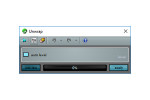
CEDAR Unwrap is a unique new process that eliminates this problem and which can rescue previously unusable audio, completely eliminating the distortion to reveal pristine, clear sound. It generates results that seem impossible until you hear it in action. Wrapping is an unusual form of clipping distortion where, instead of being flattened at the maximum [more]
-
CEDAR Declick Software Plug-in for Pyramix
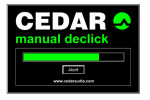
With both manual- and auto- declick capabilities, CEDAR declick for Pyramix performs at high speed without sacrificing CEDAR quality, and addresses the widest possible range of scratch and click removal problems. auto declick allows the user to process part or all of an entire playlist as an off-line process. Remarkably, there is no need for [more]
-
CEDAR Advanced Noise Removal Software Module for Cambridge
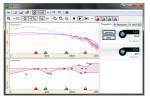
Building upon the latest noise reduction algorithm developed for the rackmount CEDAR Duo™ DDH Auto Dehisser and the Auto Dehiss process already available on CEDAR Cambridge, NR-5 marries our best signal processing with numerous facilities that help you to achieve the best possible results. It will work equally well with or without a noise fingerprint, [more]
-
CEDAR Manual Declick Software Module for Cambridge
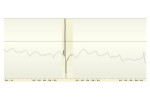
Manual Declick is ideal for restoring audio that suffers from problems for which Declickle 2 is not ideal. It allows users to specify the audio that constitutes the unwanted noise, and the algorithm – optimised for long clicks and scratches – will remove noises such as those found on optical soundtracks, as well as drop-outs [more]
-
CEDAR Auto Dehiss Software Module for Cambridge
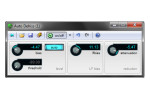
Auto Dehiss embodies a more advanced algorithm than any previous dehisser. It offers significantly improved performance and has a unique “Auto” mode that enables the software to determine the broadband noise content, removing this without the introduction of unwanted side-effects or artefacts. The module can also be used in manual mode that allows you to [more]
-
CEDAR Respeed Software Module for Cambridge
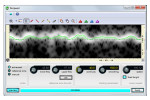
Respeed automatically identifies – or allows the user interactively to identify – unwanted speed changes contained within the presented audio. Once these have been determined the track may be processed many times faster than real-time. The result is greater pitch stability and, when used on speech signals, improved intelligibility. However, musical pitch variations such as [more]
-
CEDAR Phase Correction Software Module for Cambridge
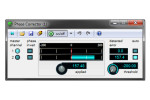
The Phase Corrector identifies any monophonic component(s) common to a reference channel and the channel(s) being corrected, and then measuring the timing differences between them. If any such errors are detected, the system recreates the signals so that they are accurately aligned. It will track any changes in the error, dynamically updating the amount of [more]
-
CEDAR Decrackle Software Plug-in for Pyramix
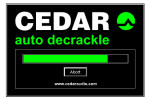
CEDAR decrackle for Pyramix doesn’t only remove the tiny clicks, crackles and “grunge” from vintage discs and vinyl LPs… it removes many types of buzz, and can be extremely effective at reducing amplitude distortions. With no parameters for you to worry about, CEDAR’s adaptive algorithms will identify and remove all of these noises automatically, making [more]
-
CEDAR Compressor Software Module for Cambridge
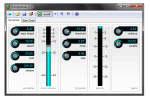
The 64-bit Dynamics Processor contains three powerful but precise modules: a compressor, an upward expander and a downward expander. Each of these modules offers eight audio channels, and you can use any combination of the processes simultaneously. Designed to the very highest audio standards, all three modules offer precise envelopes with postive and negative read-ahead, [more]
-
CEDAR Retouch Software Module for Cambridge
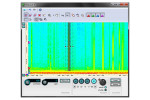
CEDAR Retouch 4 is a huge leap forward in sound processing technology. Unlike conventional restoration tools, it provides a wide range of time/frequency editing (TFEâ„¢) capabilities, and allows you to define the temporal and spectral content of the sound you want to remove. Furthermore, you are not limited to simple ‘rectangular’ definitions of complex sounds: [more]
-
CEDAR Reshape Software Module for Cambridge
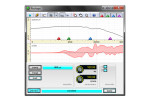
Reshape identifies the tonal and spatial characteristics of a template track (or tracks) and is able to impose these upon the audio that you are processing. The combined effect allows you to create tracks with desired EQ characteristics and a pleasing soundstage even if you have little or no experience of mastering audio. It does [more]
-
CEDAR Retouch Software Plug-in for Pyramix
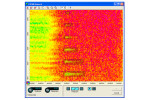
CEDAR Retouch is a huge leap forward in sound processing technology. Unlike conventional restoration tools, it allows you to define the temporal and spectral content of the sound you want to remove. This makes it possible to identify noises as varied as coughs, squeaky chairs, page turns, the creak of a piano pedal and even [more]
-
CEDAR Adaptive Filters Software Module for Cambridge
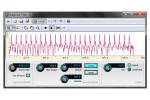
Designed to remove noise from monophonic signals, this offers filter lengths of up to 100,000 taps (although processing constraints may limit the number actually achievable) with user control of the length up to one second. There are user controlled Attack and Release constants, and the filter coefficients are displayed graphically to help the user determine [more]
-
CEDAR EQ-L Linear EQ Software Module for Cambridge
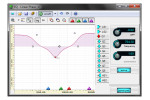
This form of EQ preserves the symmetry of the waveform and the shapes of sharp transients, and is ideal for general tonal shaping of the signal. EQ-L also includes CEDAR’s unique Constant Power Equalisation which allows you to change the tonal balance of the signal without altering its loudness.The CEDAR Cambridge v12 linear phase EQ [more]
-
CEDAR Dynamic Noise Suppressor Software Module for Cambridge
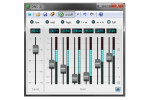
The CEDAR Cambridge v12 DNS module helps remove the rumble, the hiss, the whistles, the broadband noise and the “shot” noise from contaminated sounds. DNS splits the signal into a large number of well-defined bands, and sophisticated digital filters then analyse each of these bands, suppressing the noise independently in each. The innovative design of [more]
-
CEDAR Dynamics Software Module for Cambridge
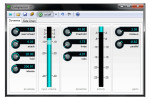
The 64-bit Dynamics Processor contains three powerful but precise modules: a compressor, an upward expander and a downward expander. Each of these modules offers eight audio channels, and you can use any combination of the processes simultaneously.Designed to the very highest audio standards, all three modules offer precise envelopes with postive and negative read-ahead, so [more]
-
CEDAR Adaptive Limiter Software Module for Cambridge
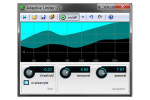
Unlike a traditional limiter or a multi-band device, CEDAR’s adaptive limiter employs a unique new algorithm developed by CEDAR. With peak and oversampling modes, it calculates a continuingly varying EQ profile that constrains the amplitude of the output while retaining the integrity of the input. The result is a signal that sounds louder while remaining [more]
-
CEDAR Dethump Software Module for Cambridge
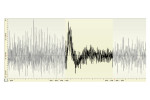
Dethump eliminates the low frequency disturbances that cannot be restored using a declick process. It allows the user to identify the audio that constitutes the thump and uses the data in and around this to build up a picture of what the low frequency audio should have been had the thump not occurred. The process [more]
-
CEDAR Limiter Software Module for Cambridge
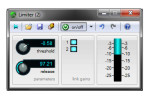
The CEDAR Cambridge v12 Limiter is designed and coded to the highest 64-bit standards and is suitable for the most exacting mastering requirements. The Limiter is far more than simply a severe form of compressor with a very high ratio; it utilises a different signal path to achieve the desired results without unwanted side-effects. When [more]
-
CEDAR Declip Software Module for Cambridge
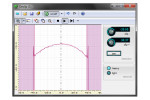
Declip is a genuine declipping algorithm that allows you to identify and remove most instances of clipping in a single real-time pass. It does so by presenting a visual indication of the density of sample values in the signal. If the Signal Analysis window displays ‘hard’ vertical edges, this demonstrates that the signal has been [more]
-
CEDAR EQ-P Precision EQ Software Module for Cambridge
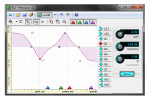
This form of EQ is particularly suitable for precision removal of constant tones and for brick-wall filtering, and is as much at home in the audio forensic laboratory as it is in the mastering studio or post-production suite. It provides high Qs across the spectrum, is totally free of pre-echo, and offers the minimum latency [more]
-
CEDAR Debuzz Software Module for Cambridge
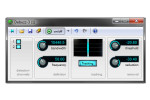
The Debuzz-3 algorithm is our best yet. It provides full-bandwidth processing, removing components across the entire audio spectrum, and it is capable of removing all manner of buzzes and hums with fundamental frequencies as high as 500Hz. Compared with earlier algorithms, it offers improved signal modelling and better component tracking. Having locked on to the [more]
-
CEDAR Dehiss Software Plug-in for Pyramix
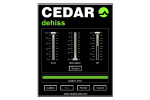
CEDAR dehiss is a fully-featured package for cleaning up audio for post, CD and DVD mastering, soundtrack restoration, broadcast, and sound archives. It is remarkably simple to use, but is nonetheless a powerful and effective package that allows you to: 1) audition cleaned audio and adjust parameters in real-time 2) render back to disk in [more]
-
CEDAR Dethump Software Plug-in for Pyramix
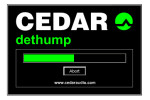
Thumps may last for many hundreds of milliseconds, so conventional declicking processes are unsuitable for restoring audio containing them. Furthermore, the spectral content of thumps will usually overlap the genuine signal, so simple filters cannot remove them without degrading the underlying signal. Dethump uses the data in and around the damaged signal to build up [more]




